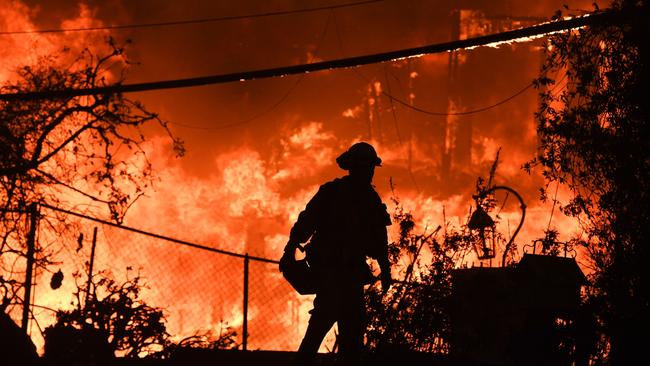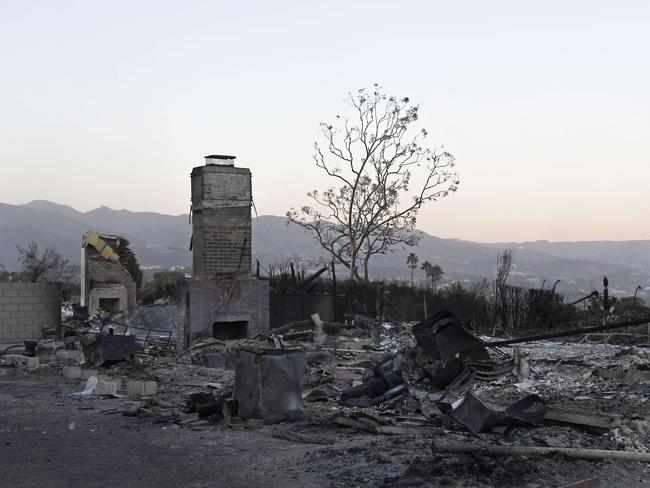Talking Point: An American’s view of Tassie fires
CRYSTAL KOLDEN: Tasmanian bushfires are worsening like wildfires of the western US, where big spending on planes and crews has done little, but focus on safety and building codes have had success

Opinion
Don't miss out on the headlines from Opinion. Followed categories will be added to My News.
LET me be upfront — I’m only a guest here in Tasmania. I’m a fire scientist of 20-plus years from the United States, and currently associate professor at the University of Idaho. I started out my career as a wildland firefighter for the US Forest Service, the federal agency that does most of the firefighting in the US, and I am currently a Visiting Scholar at the University of Tasmania researching global fire disasters.
What I see happening here, though, is incredibly similar to what we have been experiencing in the western US for the last couple of decades. More intense and larger wildfires becoming more destructive during drier and hotter summers due to climate change. Prolonged smoke events causing widespread health impacts. Homes, businesses, and lives threatened by embers and flames. Critical wilderness areas threatened, including World Heritage areas inside national parks. And calls from the public for increased fire suppression and timber management to end the crisis.
I don’t know what will or won’t work here in Tasmania. But I do know what we have tried in the US, and what has failed.

We’ve tried suppressing all fires (it didn’t work). We’ve tried increasing our firefighting personnel, building crews of specialised forces like hot-shots and smoke-jumpers. We’ve tried using modern technology to reduce ignitions and stop the fires before they start. We’ve converted some of the largest aeroplanes in the world to bombers that drop long lines of fire retardant. We’ve tried logging our way out of the problem. Most of these efforts have had only limited effectiveness, costing us billions of dollars, and in some cases firefighter lives.
Here’s what we know does work in the US: preparing ahead of time and focusing on safety.
We changed our building codes in California, and newer homes built to code are surviving fires.
We have developed emergency evacuation plans and clear roads of brush so people can get out. We have cleared vegetation around homes and communities to create green fire breaks and ‘defensible space’. We used prescribed fires to reduce fuels under controlled conditions.
We let wildfires burn in the wilderness but use aggressive point protection strategies to save important cultural sites and endangered species.
We primarily use aircraft where we can put firefighters on the ground to reinforce fire retardant lines, and often only around communities. In short, we are slowly and painfully learning to live with fire.
We are still learning what works and what doesn’t in the US; obviously we haven’t solved the wildfire problem. But here’s what we know with certainty: we will have larger, longer-burning, and more intense wildfires under climate change. We will see novel fire behaviour in places we’ve never had wildfire before — our temperate rainforests are starting to burn, too, and last summer we had a true fire tornado.
Suppression costs have already spiralled out of control — the US spent over $3 billion in 2018 fighting fires. We will have to make hard decisions about priorities — what can we protect and what do we sacrifice in order to protect human lives and property?
This past November, 86 people died during a single wildfire in California. One of the goals of my research is to understand how we can prevent such horrors from happening again.
Are things really so different here in Australia? Next week is the 10th anniversary of the Black Saturday bushfires in Victoria that killed 179, and the 52nd anniversary of the Black Tuesday fires that killed 62 right here in Tasmania. Records are falling for temperature and lack of rainfall as Australia experiences a blistering summer.
As we move forward, preparation for (rather than reaction to) wildfires will be paramount to saving lives, saving money, and saving the places we care about most, both locally and globally.
Dr Crystal A. Kolden is Associate Professor of Fire Science at the University of Idaho in Moscow, Idaho.


